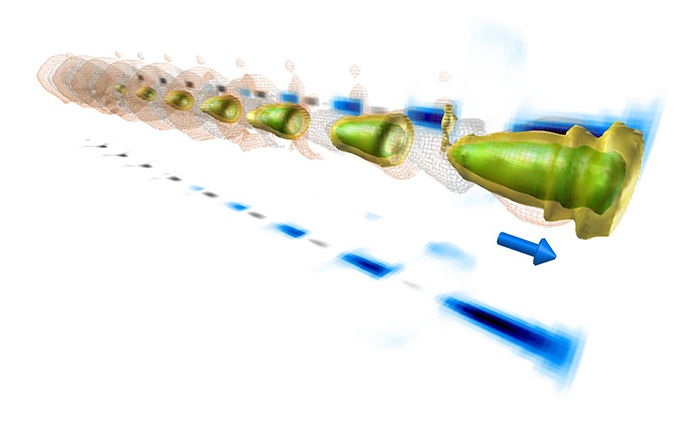Experimental validation for proton-driven Plasma Wakefield Acceleration in AWAKE project at CERN

A paper reporting on an important validation of a physical mechanism in proton-beam-driven PWFA, co-authored by QUASARs Aravinda Perera and Prof Carsten Welsch from the University of Liverpool/Cockcroft Institute, has recently been published in Physical Review Accelerators and Beams by the AWAKE collaboration.
Within LIV.DAT, Aravinda Perera’s project involves the development of enhanced models of beam-plasma interaction, including for the Advanced Wakefield Experiment (AWAKE), with a view to enabling optimisation and real-time diagnostics of beam properties in plasma wakefield acceleration (PWFA).
PWFA is a novel technique that is poised to make a step-change in particle accelerator technology. Conventional accelerators, such as the 10m-long ones at the Clatterbridge Cancer Centre, are used for generating X-rays for medical imaging and for cancer therapy, while larger ones, like the 27 km-long Large Hadron Collider (LHC) at CERN, have been instrumental in major leaps in physics over the last century.
One of the main challenges with these existing accelerators is that the strength of the electromagnetic waves used to increase the energy of particle beams, must be kept below 100 MV/m so that they don’t disintegrate the metal structure of the accelerator. This limit on intensity means that for particles to reach energies at the current frontier of fundamental physics research, accelerators must be tens or even hundreds of kilometres long, costing billions of pounds. PWFA overcomes this limit by accelerating particles using waves in a medium that is already ‘broken down’ — plasma — and can produce electric fields up to 1000 times stronger than with conventional technology.
In proton-driven PWFA at AWAKE, a 12 cm-long beam of protons en route to the LHC is diverted into a narrow channel of plasma where it excites an electrostatic wave, which can in turn be used to accelerate an externally injected electron beam to very high energy in about 5 meters. Because of its length, the proton beam must first be broken up into shorter ‘micro-bunches’ by the wave in a process called seeded self-modulation (SSM). In turn, SSM enhances the initial wave, allowing it to accelerate electrons extremely efficiently. While the physics of the SSM process has been predicted by theory, extensively tested by simulations, and its outcome observed in experiment, the difficulty in measuring the plasma wave itself has made it difficult to perform direct comparisons of the underlying mechanism with the theory.
This new work uses careful measurements of patterns in the resulting break-up of the proton beam, as well as the effectiveness of the plasma wave in accelerating the electrons depending on where along its length they are injected, and compares them with those predicted by simulations under the same experimental parameters. Thanks to the very good agreement found, this then allows the specific details of the experimental SSM mechanism to be deduced from the very much observable electromagnetic fields in the simulation.
Researchers at LIV.DAT and the University of Liverpool also carry out theoretical and simulation studies. These studies look into the effects of asymmetry in SSM and its consequences for acceleration efficiency, as well as towards incorporating new diagnostics into AWAKE. In addition to being a valuable confirmation of the tools used to understand complex beam-plasma interactions in such studies, the newly reported results are an immensely welcome validation for numerous proposed future experiments that seek to exploit the scheme demonstrated by AWAKE to advance the frontier of particle physics research.
Further information:
M. Turner, et al, (AWAKE Collaboration), “Experimental study of wakefields driven by a self-modulating proton bunch in plasma”, Phys. Rev. Accel. Beams, Volume 23, Issue 8, August 2020
https://doi.org/10.1103/PhysRevAccelBeams.23.081302